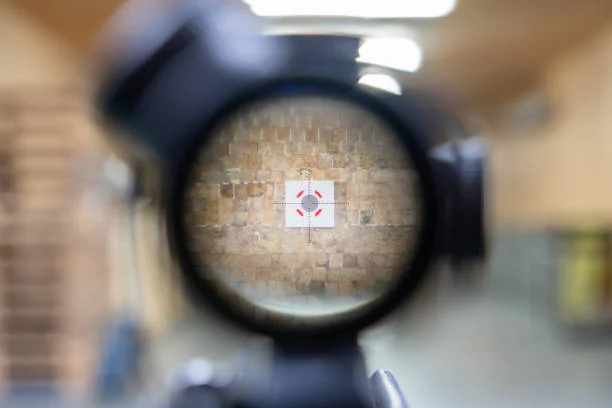In the modern shooting world—whether it’s for tactical operations, competitive shooting, or hunting—red dot sights have become indispensable. But many still wonder: How do red dot sights work? How does that glowing red dot stay on target no matter how you move your eye?
In this article, we’ll unpack the science behind red dot sight technology, explore the internal components that make these optics tick, and highlight red dot advancements that are shaping the future of shooting precision.
What Is a Red Dot Sight?
A red dot sight is a type of non-magnifying reflector sight used for firearms and other aiming devices, such as crossbows or airsoft guns. Unlike traditional iron sights or magnified optics, red dot sights allow for rapid target acquisition, unlimited eye relief, and parallax-free shooting—all through a simple illuminated dot projected onto a glass lens.
Whether you’re clearing a room or aiming at a buck in the woods, red dot sights offer a fast, intuitive aiming solution.
How Do Red Dot Sights Work?
Let’s break it down to the core question: How do red dot sights work?
At the heart of red dot sight technology is a light-emitting diode (LED). This tiny LED emits a red (or green, sometimes amber) light that is directed toward a specially coated, slightly angled lens. This lens acts as a partially reflective mirror—reflecting the light from the LED back to the shooter’s eye while allowing ambient light and target visuals to pass through.
Here’s a simplified breakdown of the steps:
- An LED is positioned at the rear of the sight, angled to project its beam forward.
- The front lens is coated with a partially reflective filter, tuned to reflect only the wavelength of the red dot.
- As light from the LED hits the lens, only the dot is reflected back to the user’s eye, appearing to float over the target.
- The user perceives the dot as being on the same focal plane as the target, enabling quick aim with both eyes open.
This makes red dot sights extremely effective for rapid-fire scenarios, close-quarters combat (CQB), and beginner-friendly target shooting.
Thanks for reading—why not stick around and see what else is new?
Understanding the Components of Red Dot Sight Technology
To understand red dot sight technology in greater depth, let’s examine its main components:
1. LED (Light Emitting Diode)
The LED emits the red (or alternative color) dot. Most red dot sights use a low-powered LED, making them energy-efficient. Some can run for tens of thousands of hours on a single battery.
2. Reflective Lens
The lens is coated with a dichroic filter that reflects only the color emitted by the LED. This coating allows the rest of the visual field to remain clear, while isolating the red dot for aiming.
3. Housing
The sight body is often made of aircraft-grade aluminum or similar lightweight material to ensure durability. Modern red dot housings are shockproof, waterproof, and fog-resistant.
4. Adjustment Dials
Red dot sights feature windage and elevation dials that allow the user to zero the dot at a specific distance. Some also offer brightness adjustments for different lighting conditions.
Reflex Sights vs. Holographic Sights: Are They the Same?
While often grouped together, reflex red dot sights and holographic sights are different technologies.
- Reflex sights use the LED and reflective lens system described above.
- Holographic sights, like those from EOTech, use a laser to project a hologram of a reticle inside the optic window. These are typically more expensive but offer enhanced clarity and reticle precision.
So when asking “how do red dot sights work,” it’s important to specify the type—reflex optics dominate the market due to simplicity and battery life.
Red Dot Sight Types: Tubed vs. Open
Red dot sights come in two primary configurations:
1. Tubed Red Dot Sights
These resemble a traditional scope and offer better protection for the internal LED and lens system. They are ideal for outdoor use where ruggedness matters.
2. Open or Windowed Red Dot Sights
Also called “mini red dots” or “RMR-style sights,” these are compact, lightweight, and often mounted on pistols or backup positions on rifles.
Each has unique advantages based on application and personal preference.
Parallax and the Floating Dot Phenomenon
A common selling point of red dot optics is that they are parallax-free—but what does this mean?
Parallax in optics refers to the apparent shift in reticle position when the shooter’s head moves off-axis. While no optic is completely parallax-free, most red dot sights are parallax-minimized at a fixed distance (often 25-50 yards). The dot may appear to move, but it still remains aligned with the point of impact at the zeroed distance.
This “floating dot” sensation is what allows fast target transitions without needing perfect eye alignment.
Advantages of Red Dot Sight Technology
Let’s summarize what makes red dot sight technology so effective:
- Speed: Aim with both eyes open and acquire targets faster.
- Simplicity: No need to align front and rear sights—just place the dot and shoot.
- Durability: Modern red dot sights are built to withstand recoil, shock, and environmental challenges.
- Battery Life: LED-based sights can offer up to 50,000 hours on a single battery.
- Versatility: Use on rifles, pistols, shotguns, crossbows, and more.
These advantages make red dot optics a top choice across military, law enforcement, and civilian applications.
Red Dot Advancements in the Last Decade
Modern red dot optics have come a long way from their humble beginnings. Here are some key red dot advancements:
1. Solar-Assisted and Motion-Activated Sights
Brands like Holosun have introduced solar backup panels and Shake Awake features, where the sight powers down when not in use and activates instantly when moved.
2. Multi-Reticle Systems (MRS)
Some sights now offer switchable reticles (e.g., dot, circle-dot, etc.) allowing users to choose based on mission or shooting preference.
3. Smaller, More Rugged Designs
The red dot miniaturization trend has enabled pistol-mounted optics that are just as durable and precise as larger rifle optics.
4. Better Lens Clarity and Coatings
Enhanced lens coatings provide improved light transmission, reduced glare, and more accurate color fidelity through the glass.
5. Integration with Magnifiers and NVGs
Red dot sights now commonly integrate with flip-to-side magnifiers and night vision devices, expanding their usability in diverse lighting and range conditions.
Red Dot Sights for Different Use Cases
Choosing a red dot depends on your needs:
- Home Defense / Tactical Use: Look for durable optics with large viewing windows and quick-detach mounts.
- Competitive Shooting (e.g., 3-Gun): Opt for bright dots with wide fields of view and minimal parallax.
- Hunting: Consider models with motion activation and long battery life.
- Pistol Carry: Choose mini reflex sights that fit your slide cut or mounting plate.
Maintenance Tips for Your Red Dot Sight
To ensure your red dot operates at peak performance:
- Check battery life regularly and replace before failure.
- Clean the lens with lens-safe cloths to remove fingerprints, dust, and moisture.
- Store in a dry environment, especially if you use your weapon outdoors.
- Zero your sight periodically, especially after rough handling or environmental exposure.
Conclusion: The Future of Red Dot Optics
So, how do red dot sights work? At their core, they use simple LED technology and reflective optics to project a floating dot for quick and accurate aiming. But red dot sight technology has evolved rapidly—with innovations that improve battery life, ruggedness, versatility, and ease of use.
As the demand for speed, simplicity, and precision grows across shooting disciplines, red dot advancements will continue to shape how we aim and shoot.
Whether you’re a beginner or a seasoned operator, investing in a high-quality red dot sight can be one of the best upgrades for your firearm.
Catch up on the latest updates anytime from 2A Magazine.







